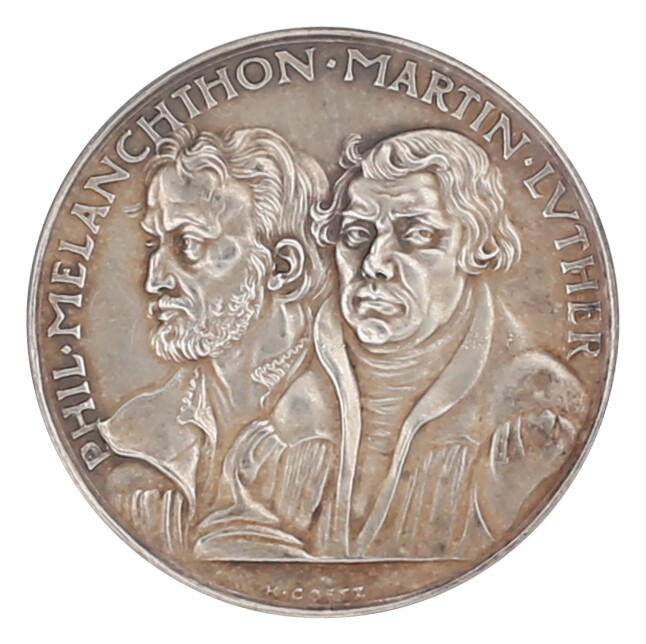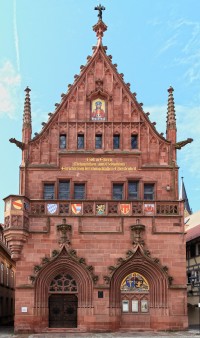Vorderseite: Melanchthon und Luther, beider Brustbilder nach halb links, im Abschnitt unten Signatur: K. GOETZ
Umschrift: PHIL. MELANCHTHON . MARTIN LVTHER
Rückseite: Darstellung der Verlesung der Confessio Augustana durch den kursächsischen Kanzler Christian Beyer vor dem in der Mitte thronenden Kaiser Karl V.; im Abschnitt zwischen den Jahreszahlen 19 – 30 die Wappen von Nürnberg, Augsburg und Reutlingen (Nürnberg und Reutlingen gehören zu den Erstunterzeichnern der Confessio Augustana)
Umschrift: CONFESSIO AVGVSTANA 1530
Martin Luther (1483 – 1546), Theologe und Reformator, Philipp Melanchthon (1497 – 1560), Humanist, Theologe und Reformator
en

